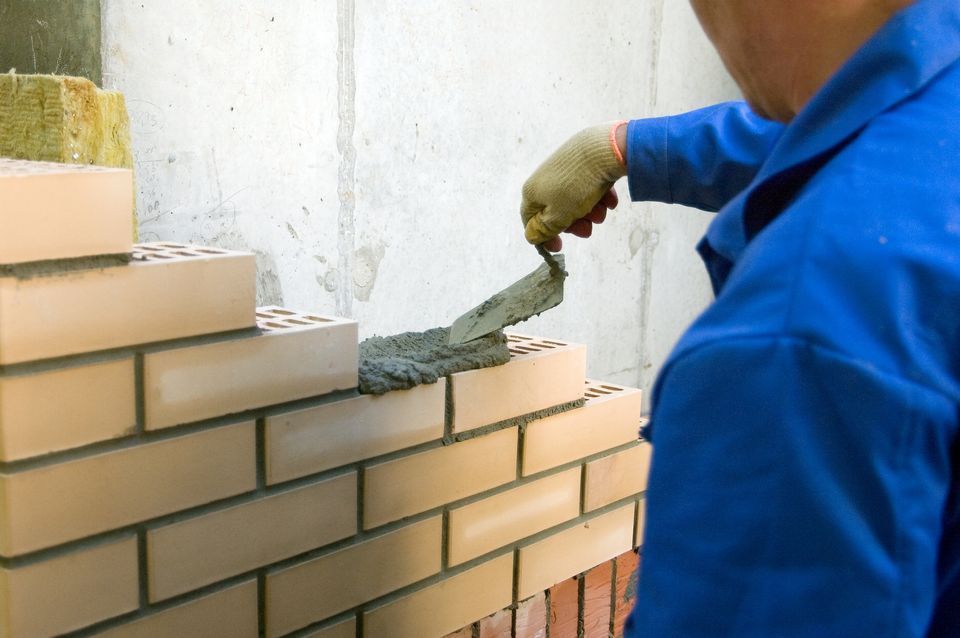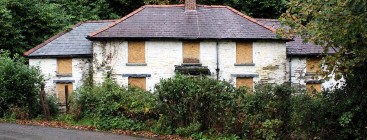Vacant Property Refurbishment Grant explained: the pros and cons of scheme made famous by ‘Room to Improve’ architect Dermot Bannon

Interest in vacant and derelict rural houses has increased massively thanks to the Vacant Property Refurbishment Grant.
In the context of a severe housing shortage, soaring urban rents and the mainstreaming of remote work, the abandoned cottage on a half-acre at the end of a boreen suddenly becomes very attractive as a home, a home office and a place from which to do business.
The grant, which could be expected to play a significant role in reversing rural decline, isn’t yet the game-changer it was expected to be. While it has its success stories, it is widely experienced as bureaucratic and clunky and not quite the gift horse it appears to be at first glance.
With funding of up to €50,000 available for the refurbishment of vacant homes and €70,000 for derelict houses, along with a potential €26,000 SEAI grant, it all makes for an attractive package. It also can provide a welcome route around restrictive local planning conditions.
‘If you have the money, you don’t need the grant and if you need the grant, there’s no guarantee you’ll get the money’
However, according to Roscommon auctioneer Ivan Connaughton, it can leave people in a catch-22 situation.
“The application has to be sanctioned before the work begins and the job must be paid for in its entirety before the council will pay out. The completed work must be in absolute accordance with the schedule of works outlined in the application, otherwise they may not pay out,” Mr Connaughton said.
“So people must have the money in cash, they can’t apply for a loan based on a successful grant application as the bank or credit union has no guarantee the grant will be paid.
“It’s a catch-22, if you have the money, you don’t need the grant and if you need the grant there’s no guarantee you’ll get the money.”
Clare auctioneer David Costelloe agreed and said: “It is very hard to get short-term finance, and this is important in situations like this.”
To qualify for funding, the applicant must own the property, or be in the process of purchasing it.
Planning permission must be obtained for buildings being converted from non-habitable places or vacant for a long number of years, but the granting of this permission is not a given.
Each part of the work covered by the grant has an allocated budget, if the applicant goes over the budget on a particular work, the owners must pay out of their own pockets.
Invoices relevant to the renovation must be submitted to the local authority, which will inspect the property to ensure works are completed.

Nenagh auctioneer Eoin Dillon said one of his customers who was in the process of renovating a house under the scheme decided to forego the grant.
“It would have meant retaining the old walls of the derelict building, which would ultimately have resulted in a poorer house, so he demolished the whole building and forfeited the grant,” he said.
Bureaucratic difficulties aside, the scheme has many upsides for rural areas. It can enable prospective homeowners to circumvent the local needs planning requirement applicable many places.
“It helps non-locals find a home in a place where they are not native,” Mr Costelloe said.
Mr Dillon said: “It is encouraging people to travel and move into new communities.”
Most auctioneers say that the scheme has led to modest price increases, but agree that it hasn’t had a huge price impact.
Auctioneer Brendan Mannix of Castleisland, Co Kerry, said: “While it has certainly brought more properties on to the market, the grant simply means that these are more saleable, but they are not worth more.”
He does not believe it will have an impact on the bulk of vacant and derelict properties. “We live in a very rich society where people can afford to sit on property and not sell it,” he said.
‘Houses that were being ignored and left to rot are now attracting attention’
According to Tom Crosse of GVM Limerick, the grant is absorbed by the rise in building costs, “but it has been a help in farm sales”.
“If a farm is being sold with an old house in the corner of a field, a prospective owner might buy on the strength of there being a ready market for that site with the old building,” he said.
Mr Connaughton said the grant is undoubtedly increasing and improving the housing stock.
“Houses that were being ignored and left to rot are now attracting attention. If something could be done about staged payments for the various phases of renovation, the grant scheme would be far more user-friendly,” he said.
Mullingar auctioneer Padraic Murtagh said while it provides a cushion against rising building costs, the scheme is also having a positive impact on the housing stock and the rural environment.
“It is revitalising the countryside and improving the landscape.
“It also gets around the local needs criteria and if the property is located on the outskirts of a town or village it is not subject to the ribbon development restrictions.
Terms and conditions:
- Funding of up to €50,000 is available for the refurbishment of vacant homes and €70,000 for derelict houses.
- To qualify for funding, a house must have been built before 2008 and left vacant for at least two years. An SEAI grant of around €26,000 can be used to improve energy efficiency.
- The applicant must own the property, or be in the process of purchasing it. Planning permission must be obtained for buildings being converted from non-habitable places or vacant for a long number of years. Approval for the grant must be obtained from the local council before works commence.
- Each service covered by the grant has an allocated budget, if the applicant goes over budget on a particular work, the owners must pay out of their own pockets. Invoices must be submitted to the local authority, who will inspect the property to ensure works are completed.
- The grant can be used to refurbish an eligible property either as a primary residence or as a rental property. If the grant is obtained to refurbish a rental property, the applicant must register the property with the RTB and may be subject to additional inspections during the renovation.
- If the property is sold or unavailable to rent within 10 years, the applicant must repay the local authority.
- Similar rules may also apply to grants given to houses renovated as primary residences. If the applicant sells or rents it out within 10 years, the local authority must be repaid. If these terms are broken in less than five years, the full amount must be repaid. If they are broken in more than five years but less than 10, 75pc of the grant must be repaid.
Source: Irish Independent (Jim O’Brien) 22nd January 2024

No responses yet